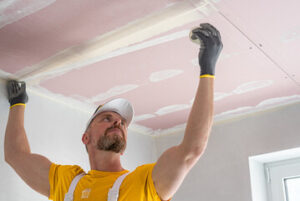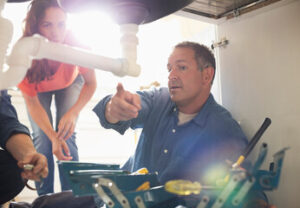Deck Contractors Charleston SC should be able to provide a comprehensive and detailed cost estimate, including labor, materials, and permits. They should also be willing to work within your budget and provide a clear payment schedule.

Ask for references or a portfolio of past projects to gauge craftsmanship and style. Ask how they handle unforeseen issues that could impact project completion.
As you narrow down your list of potential contractors, ask for recommendations from friends and family. They can provide valuable insight into the quality of their work and the contractor’s personality, which are important considerations in a project as large as building a deck.
In addition to referrals, review the builders’ websites and social media pages for examples of past projects. Look for a portfolio that includes a range of design styles and materials, as well as projects that are similar in scope to your own vision. This can help you gauge whether the builders are able to execute your designs and meet your expectations for the finished product.
During your interview, ask the builders about their experience and how they approach a project. Pay special attention to their responses to questions about challenges that arise during construction. A good contractor will be able to explain how they handled these situations and prevent future issues from arising.
It’s also a good idea to ask the builders about their timeline for work. This can vary based on factors like weather and the availability of materials, so it’s important to get an accurate picture of what you can expect for your project. A reputable builder should be able to provide a clear timeline for completion and communicate any delays in advance.
Once you’ve determined a list of potential contractors, ask each to submit a written quote for your project. Compare their estimates and choose the best option for your budget and schedule. During this process, it’s important to ask about any fees or additional costs that may be associated with your project, such as permitting, delivery charges, and debris removal.
Conduct Research
When selecting a Deck Contractor, it’s important to conduct your own research to determine the best fit for your project. Begin by asking for recommendations and reviewing online reviews and testimonials from past clients. This will give you a good idea of the contractors’ work and customer service standards. Once you’ve compiled a list of potential candidates, schedule meetings to assess their professionalism and expertise in person.
During your interview, ask each contractor about their experience and whether they specialize in the type of deck you’re looking to build. They should be able to answer questions about materials, pricing, and timelines. Additionally, if the project requires permits or inspections, they should be able to handle this on your behalf.
It’s also important to discuss the design and style of the deck you’re hoping to build with each candidate. Look for contractors that offer custom design services and can translate your vision into a finished product. In addition, it’s helpful to ask about their preferred materials and installation techniques, as these can impact the cost and longevity of your deck.
Lastly, make sure the contractor is licensed and insured before hiring them for your project. Ask to see their credentials and request proof of insurance coverage, as this will protect you from liability in the event of an accident or damage during construction. Additionally, look for professional affiliations and memberships, as these can indicate a dedication to maintaining industry best practices.
Finally, it’s essential to establish open lines of communication with each contractor early on in the process. This ensures that both parties are on the same page and helps reduce frustration throughout the project. Look for contractors that prioritize effective communication and utilize shared project documentation, as this will help facilitate the transfer of information and foster a collaborative environment.
Check Credentials and Licenses
When evaluating potential contractors, it is important to ask for their credentials and licenses. A licensed builder will have the proper knowledge and expertise to construct your deck safely and in accordance with local building regulations. They should also have insurance that covers liability and worker’s compensation. This will protect you from any unforeseen circumstances that may arise during the project.
Once you have gathered recommendations and conducted research, create a shortlist of candidates that seem to fit your requirements. Ask each to provide detailed estimates and timelines for the project. This will help you assess their pricing and compare quotes more effectively. Make sure that the estimates include all aspects of the project, including materials, labor, and permits.
If the contractor is unable or unwilling to provide references from past clients, do not hire them. This is an indication that they are not a reliable or professional contractor. You should also request copies of their insurance and licenses to ensure that they are legitimate.
Ask about their process and if they are willing to accommodate any changes you may have during the design phase. A reputable contractor will use the design and building process to bring your vision to life while remaining open to your ideas and feedback.
Finally, ask about site preparation. They should be able to describe how they will clear the site, mitigate any landscaping or impediments, and provide a solid foundation for your new deck. They should also have a plan for managing debris and ensuring that any work done on your property meets industry standards.
Once you have made a decision, finalize the contract with your chosen contractor. Review the scope of work, payment schedule, timeline, and warranty information to ensure that they are accurately documented.
Get a Detailed Quote
When comparing contractor quotes, focus on the level of detail and professionalism each offers. A comprehensive and detailed quote helps avoid misunderstandings, which can lead to costly delays or mismatched expectations. Look for a clear breakdown of costs, including labor, materials, and permits, as well as a projected timeline.
You can also learn about a contractor’s process by asking for references from past clients. Call or email them to ask about their experience with the contractor’s quality of work, adherence to deadlines, and overall satisfaction. You can also ask about any issues that arose during the project and how they were handled.
Once you’ve shortlisted a few contractors, request written estimates for the work to be performed. Detailed and transparent quotes can help you make the best decision that aligns with your budget and vision for your deck.
The contractor’s design and planning process is an important factor to consider. Look for a contractor that provides physical samples of decking materials and digital renderings to help you visualize your finished product. You can even use 3D rendering software to explore different design options and see how they would work in your home.
A reputable contractor will be familiar with local regulations and be willing to obtain necessary permits on your behalf. This step is crucial for both parties, as it ensures that your deck complies with safety and building codes. It also demonstrates that the contractor takes the project seriously and treats it with the care and attention it deserves. If a contractor is unwilling to do this, it may be a red flag that they lack the necessary credentials and insurance coverage. This could expose you to liability in the future if something goes wrong during or after construction.
Finalize the Contract
After you’ve narrowed down your list of contractors, it’s time to meet them face-to-face and talk through your project. Observe whether they listen attentively, offer practical advice and demonstrate a willingness to work with your vision for the deck. A contractor who shows a clear commitment to your satisfaction will be transparent about the process, timelines and costs associated with your project.
You should also ask if they can provide you with a portfolio of previous projects to get ideas about style and materials. Examine the photos carefully and pay attention to the contractor’s experience in building with different types of material and construction techniques. Lastly, make sure your contractor has a local presence; they’ll be more familiar with the rules and regulations that apply to your area and will have access to reputable subcontractors.
Before any physical work begins, a reputable builder will consult with you to discuss the details of your deck. They will be able to determine whether full replacement is the best option or if repairs can address the issues. They will then work with you to develop a design that meets your needs and budget. They’ll also obtain any necessary permits and comply with local building codes.
During the meeting, you should establish open lines of communication and determine how often you want to receive progress updates (e.g. weekly or after milestones such as framing or inspection). You should also agree on a procedure for resolving any issues that arise during construction. Some companies will have a 1-5 year warranty on workmanship and materials. A good warranty will give you peace of mind and reassurance that any problems can be addressed quickly and effectively.








